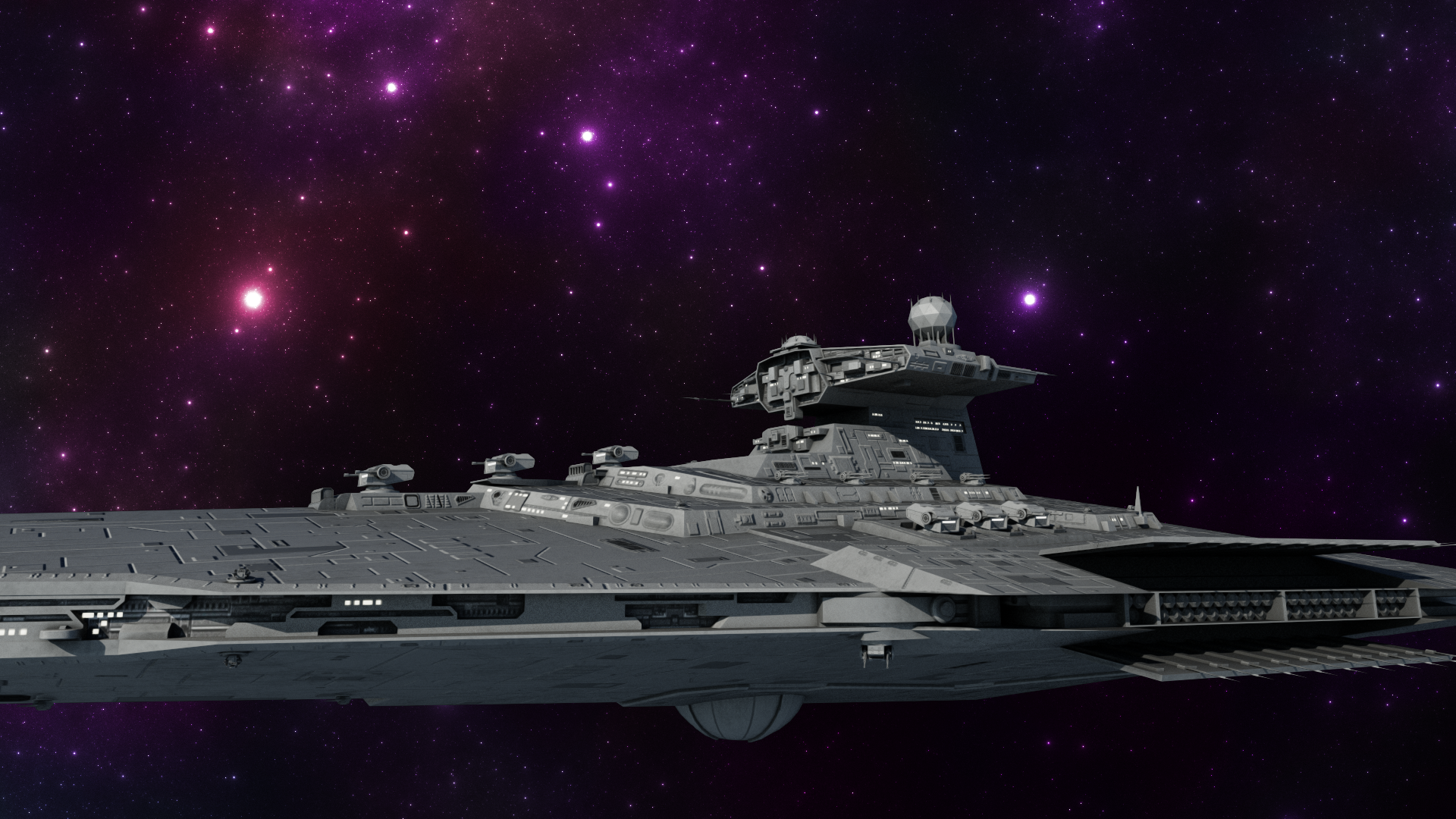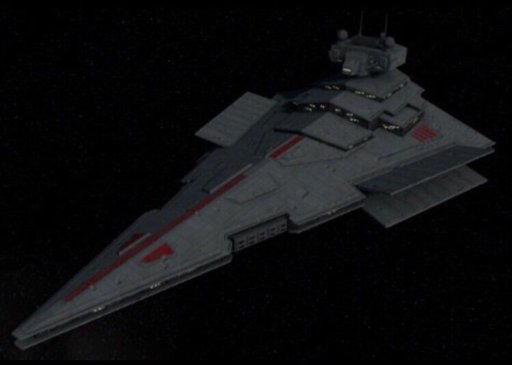Victory 1 Star Destroyer


Contents Characteristics DimensionsVictory I-class.Victory I-class were 900 long, just over half the size of the later. Like later Star Destroyer designs, the Victory possessed the ability to enter the upper levels of a planetary atmosphere. This gave the ship a decided advantage of added precision when engaging in the ground attack operations the class was designed to carry out. In addition, the Victory could also pursue other vessels hoping to escape by diving towards a planet.
A set of atmospheric maneuvering surfaces were located along the ship's flanks as well. Some Victory variants dispensed with the atmospheric maneuvering surfaces altogether. Star Destroyers of this kind fought in the, notably in the.
Offensive and defensive systemsDespite being several decades old at the time, the and armor of Victory I-class ships were still quite heavy compared to the other vessels used during the Galactic Civil War. They were equipped with 10, 40 double batteries, 80 tubes, and 10 projectors.Due to being clad in grade durasteel, a Victory-class vessel was said to be capable of fighting a to a stand-still. ComplementA single Victory I-class Star Destroyer required 4,798 crew members and 402 for optimal operation and could transport up to 2,040 troops, 8,100 metric tons of cargo, several ground vehicles like the, and two of.
A pair of Victory I Destroyers battling Rebellion forces Propulsion systemsThe Victory I-class Star Destroyer's biggest disadvantage was its underpowered, which could not produce sufficient acceleration to pursue newer and faster ships, allowing them to escape ship-to-ship combat. This flaw was rectified in the limited, produced shortly before the advent of the Empire.Some variants of the Victory-class were designed with three main thrusters and four auxiliary thrusters, like the larger Imperial-class. Others, like the and the, had two main thrusters and two auxiliary thrusters wedged in-between.The Victory Star Destroyer's Class 1.0 hyperdrive was superior to that of the Imperial-class Star Destroyer, allowing Victory ships to reach their destinations in half the time. History Republic originVictory I cross-section.At the start of the Clone Wars and the introduction of the, the of ordered industrial spies and ship-designers to come up with a way to curb lead on new contracts with the Galactic Republic.The two rival shipbuilders, and, later embarked on a collaborative design-project while the war was still in its early phases.
Ck2 over vassal limit. This was called the ', which resulted in the Victory-class. This design by became a direct challenge to Kuat's.An early batch of Victory I-class Star Destroyers were deployed to defend against the of, which had escaped of.This resulted in the deployment of the ' six months ahead of schedule. Despite this, the majority of the initial commission group was not deployed until had already dissolved the Galactic Republic and established his Imperial rule.A subclass known as the was introduced later in the. Refitted with new ion engines by to replace the underpowered LF9s, and trading the concussion missiles for and extra turbolasers; this variant was designed with an emphasis on space combat. This newer class was externally very similar to its predecessor.
Very few Victory II's were built, as they were introduced not long before the Imperial-class, which essentially supplanted it in the space combat role.Imperial serviceThe abundant number of Imperial-class Star Destroyers, and the growing popularity of the Imperial-series amongst the Imperial Starfleet, led to many Victory-class Star Destroyers being decommissioned or sold to groups like the, which purchased 520. Most of the Victory-series Star Destroyers still in Imperial service near the height of the Empire were often assigned to planetary defense roles.A Victory-class Star Destroyer in an attack formation with an and.Within the, Victory-class Star Destroyers were considered second only to for most operations in the against pirates. The considered one Victory-class Star Destroyer the equivalent of two.Heavy squadrons often featured Victory-class Star Destroyers; at the systems force level and above, they accompanied larger Star Destroyers, and in major assaults. Such as in the, while other Star Destroyers used their turbolasers to strip the shields and armor of enemy capital ships, Victory Destroyers were called upon to deliver devastating barrages of concussion missiles against their now-unprotected hulls. The ability to pursue enemies into planetary atmospheres also made Victorys an invaluable part of many Imperial squadrons.A key disadvantage of the Victory I was its low speed which made its deployment difficult and allowed quicker foes to escape pursuit. During the, the Rebel commander was able to defeat each Imperial squadron separately before they could come to each others aid, otherwise the greater firepower of the Victory ships would have prevailed.
Victory 1 Star Destroyer
After that, Imperial tacticians necessitated assigning support ships, such as, and, to make up for the shortcomings.A third Victory Star Destroyer variant at the.While was a Vice Admiral, he had flown his flag on Victory ships such as the and the, as did Admiral with the Protector. Most notably, the and the all but wiped out the notorious pirates during the; the pirates were aware of the impending Imperial attack but were overconfident in their ability to defeat a pair of 'antiquated' Victory Star Destroyers.When took control of the, this saw a return of the Victory-class to frontline duties, because of a lack of larger and more powerful ships such as the Imperial-class.Galactic Alliance serviceFollowing the, the commissioned an updated version of the Victory for use as pirate hunters across its territories.





